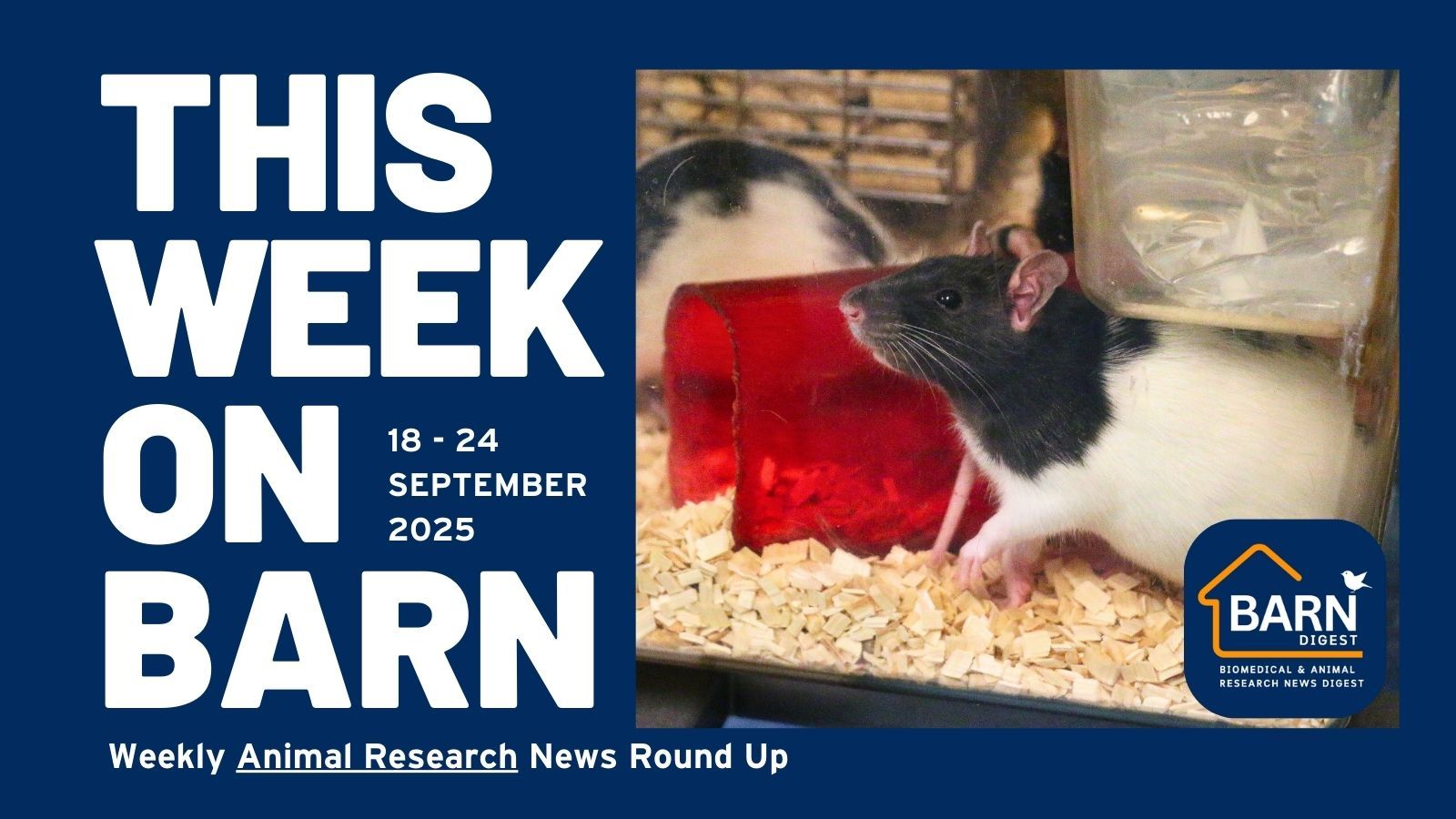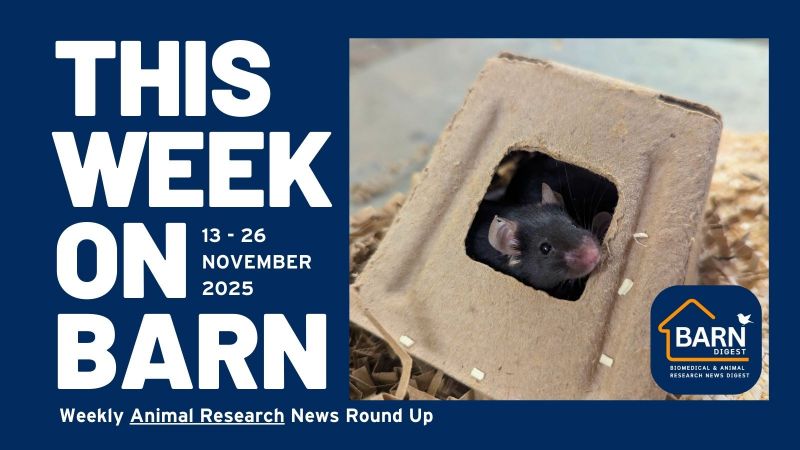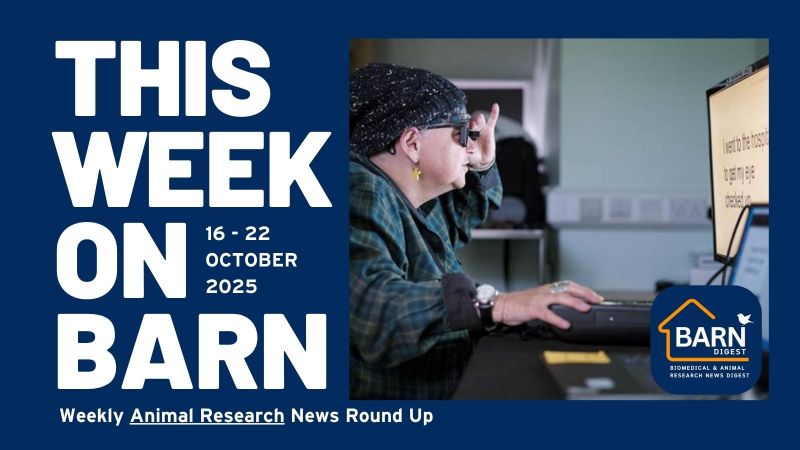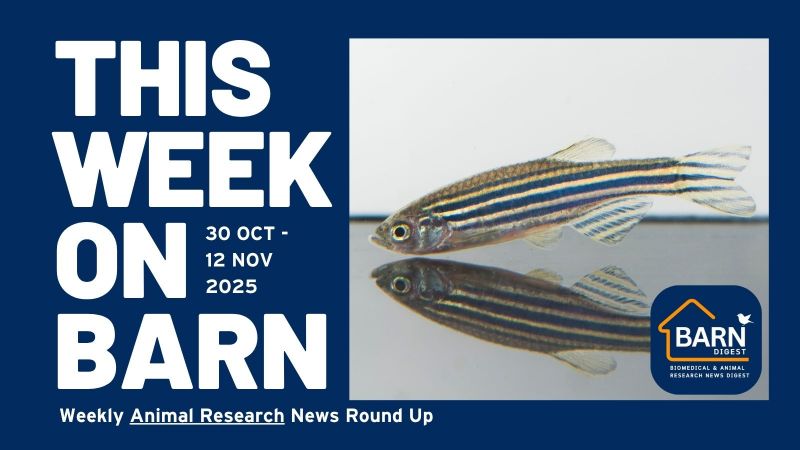
The Biomedical Animal Research News (BARN) Digest collates animal research news from UAR’s 150+ member organisations into one, easy to access, feed. These animal research related stories include topics such as: medical studies and advancements; animal welfare and 3Rs news; funding, regulatory, and policy news; and conservation and environmental research that involves animal testing.
Each week, we pick the most interesting, groundbreaking, and important news to feature in a weekly news roundup. In this round up we feature news stories from 18 - 24 September 2025.
View BARN to see daily news updates from UAR members.
DISCOVERY / BASIC RESEARCH
Study reveals brain’s built-in distance tracker
UNIVERSITY OF ST ANDREWS | RATS, HUMANS
"In new research from the University of St Andrews, published today in Current Biology, researchers from the School of Psychology and Neuroscience trained rats to run a specific distance to get a reward. They then recorded from individual cells in the brain’s navigation system as the rats performed the task. Previous studies have shown that some of these cells have very regular peaks of activity, approximately every 30cm, like a neural pedometer. St Andrews researchers then changed the task environment so that the peaks of activity were less regular and found that the rats’ ability to estimate distance got worse.
The regularity of the pedometer-like signal was correlated with accuracy of distance estimation, suggesting that this is the neural signal that allows us to keep track of how far we have walked.
Researchers then recreated the rat task for humans in the real world, building a 12.5m long environment in the St Andrews Students’ Union. Results showed that humans can also accurately judge distance and that the same environmental manipulation that distorts the pedometer in rats also makes humans worse at the task."
https://news.st-andrews.ac.uk/archive/study-reveals-brains-built-in-distance-tracker/
https://www.bbc.co.uk/news/articles/crkjn6r7j23o
Regular exercise ‘rewires’ heart-control nerves differently on left and right side, study finds
UNIVERSITY OF BRISTOL, UCL | RATS
"The research, in collaboration with the University College London (UCL) in the UK and the University of São Paulo (USP) and Federal University of São Paulo (UNIFESP) in Brazil, used advanced 3D quantitative imaging analysis methods called stereology. Findings showed that trained rats over a 10-week period had around four times more nerves – called neurons – in the cardiovascular cluster on the right-hand side of the body than the left compared to untrained rats. Conversely, the neurons on the left nearly doubled in size while those on the right slightly shrunk."
https://www.bristol.ac.uk/news/2025/september/exercise-rewires-heart-study.html
Decoding the selfish gene, from evolutionary cheaters to disease control
UNIVERSITY OF SHEFFIELD, UCL | INSECTS
"Scientists from the University of Sheffield have uncovered how to potentially control harmful insect populations by studying a "selfish gene" that manipulates inheritance. The new research focuses on meiotic drive, a process where a selfish gene gives itself a better chance of being passed on to the next generation, disrupting the normal 50/50 inheritance pattern.
By studying the Malaysian stalk-eyed fly, researchers discovered that a selfish gene can damage rival sperm carrying a Y chromosome, leading to a population with far more females than males. Understanding this genetic mechanism could provide a new way to control insects that spread disease and cause food shortages by causing their populations to become unsustainably female-biased"
https://sheffield.ac.uk/news/decoding-selfish-gene-evolutionary-cheaters-disease-control
ENVIRONMENTAL RESEARCH
Oil rig study reveals vital role of tiny hoverflies
UNIVERSITY OF EXETER | INSECTS
"A study of migratory hoverflies on a North Sea oil rig has revealed their vital role as long-distance pollen transporters.
Researchers studied 121 marmalade hoverflies that landed on an oil rig in the Britannia oil field, 200km off the coast of Scotland.
Pollen was found on 92% of the hoverflies and – with no vegetation on the rig, and no land nearby – this shows they can transport pollen over great distances, potentially linking plant populations that are hundreds of kilometres apart.
The hoverflies carried pollen from up to 14 different plant species, including many common crops – highlighting their important role in agriculture."
Visit BARN for daily news updates
Last edited: 24 September 2025 10:49




